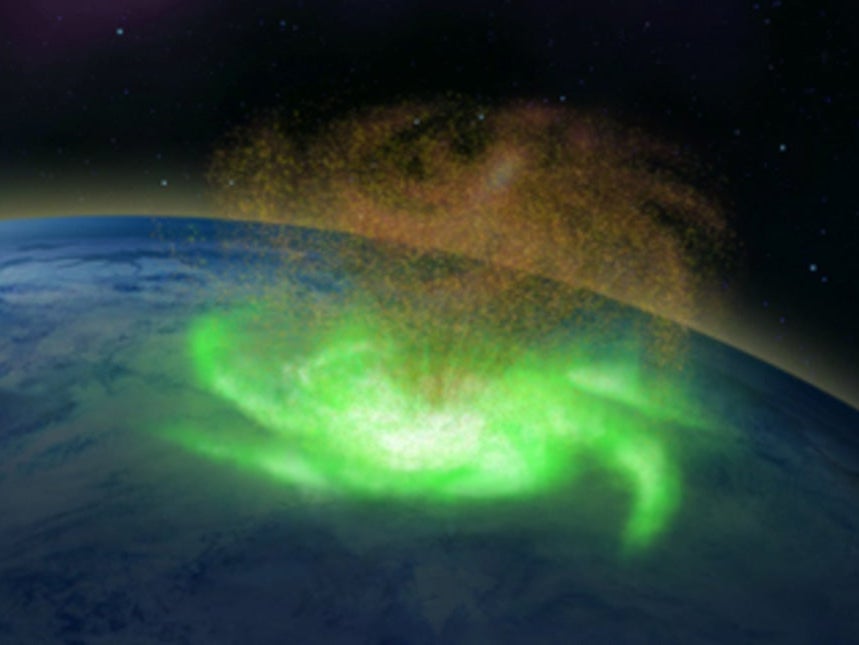Space hurricane which rains electrons instead of water discovered by scientists
‘Until now, it was uncertain that space plasma hurricanes even existed, so to prove this with such a striking observation is incredible’, scientist says

Your support helps us to tell the story
From reproductive rights to climate change to Big Tech, The Independent is on the ground when the story is developing. Whether it's investigating the financials of Elon Musk's pro-Trump PAC or producing our latest documentary, 'The A Word', which shines a light on the American women fighting for reproductive rights, we know how important it is to parse out the facts from the messaging.
At such a critical moment in US history, we need reporters on the ground. Your donation allows us to keep sending journalists to speak to both sides of the story.
The Independent is trusted by Americans across the entire political spectrum. And unlike many other quality news outlets, we choose not to lock Americans out of our reporting and analysis with paywalls. We believe quality journalism should be available to everyone, paid for by those who can afford it.
Your support makes all the difference.A space hurricane swirling high above the North Pole has been observed by scientists for the first time, offering an initial glimpse at a phenomenon scientists believe could be possible in planets across the universe.
The vast hurricane was spotted by a team of scientists led by China’s Shandong University, which analysed satellite observations made in August 2014 to construct a 3D image of the phenomenon in Earth’s ionosphere, where the planet’s atmosphere meets the void of space.
What they found was a swirling mass of plasma that behaved much like the wind-based weather phenomenon seen on Earth. But unlike the hurricanes observable on the face of the planet, the space equivalent rained electrons instead of water.
The space hurricane, which spread out across 1,000km above the North Pole, turned anticlockwise much like earthbound hurricanes in the northern hemisphere, and lasted for nearly eight hours until it ultimately broke down.
It was found to have a quiet centre, like its earthly counterparts, as well as multiple spiral arms and widespread circulation.
Such hurricanes are expected to be responsible for important effects on space weather effects such as increased satellite drag, disturbances in high frequency radio communications, and increased errors in over-the-horizon radar location, satellite navigation and communication systems.
According to a study published in the journal Nature Communications, the process may also be important for the interaction between interstellar winds and other solar systems throughout the universe.
Space weather has been a particular focus of research since the 1950s due to the advent of satellite technology, with the first solar winds - or the flow of charged particles from the sun through the solar system - observed towards the end of the decade.
Scientists believe space hurricanes may also occur near other planets and moons with magnetic fields and plasma - the state of matter in which a gas becomes so hot its atoms are split into independently moving electrons and ions, making them easily influenced by forces like the push and pull of the earth’s magnetism.
Professor Mike Lockwood, professor of space environment Physics at the University of Reading, said: “Until now, it was uncertain that space plasma hurricanes even existed, so to prove this with such a striking observation is incredible.
“Tropical storms are associated with huge amounts of energy, and these space hurricanes must be created by unusually large and rapid transfer of solar wind energy and charged particles into the Earth’s upper atmosphere.
“Plasma and magnetic fields in the atmosphere of planets exist throughout the universe, so the findings suggest space hurricanes should be a widespread phenomena.”
Additional reporting by agencies

Join our commenting forum
Join thought-provoking conversations, follow other Independent readers and see their replies
Comments